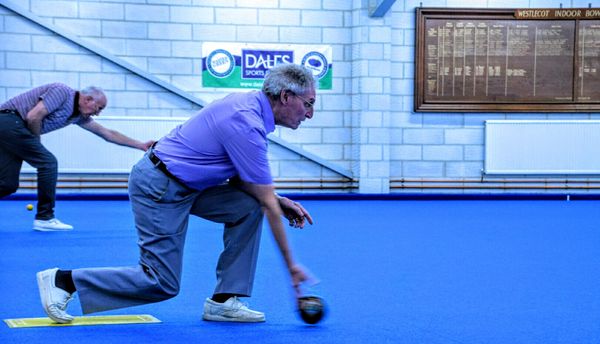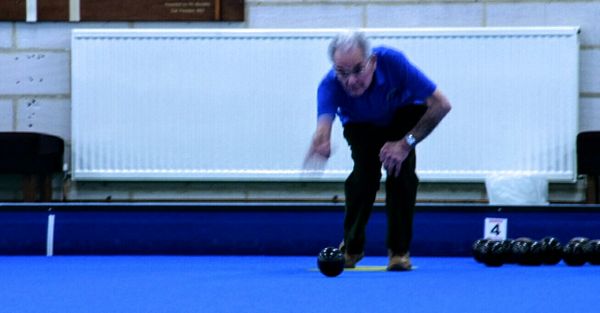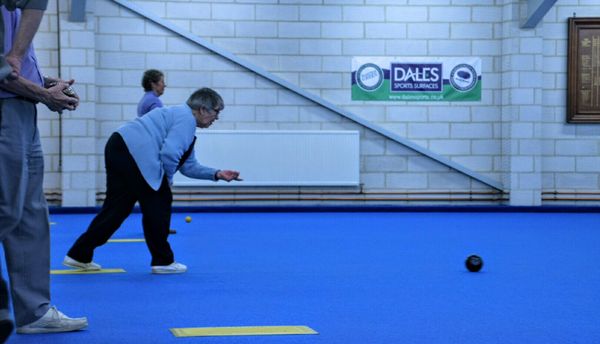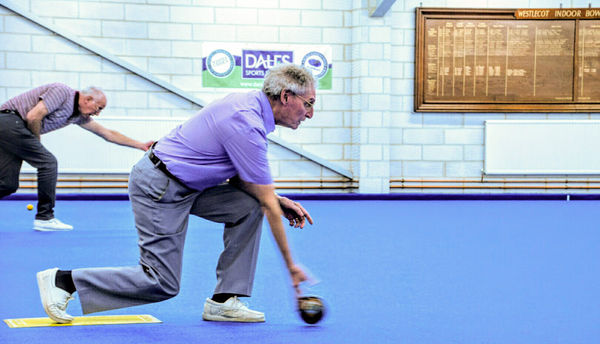Help Please on solving a blue cast on photos.
Feb 8, 2016 12:25:25 #
Hi all, I have a question regards these photos. They were taken handheld inside a large building with tube lighting, people playing bowls. I adjusted the cameras white balance for strip lghting but all the photos have come out with a Blue cast. All the photos are JPEG, next time I'll do RAW aswell.
Anyone out there have suggestions for:
1. Any in camera adjustment I can do so it don't happen again?
2. Is there a way I can adjust the photos in camera BEFORE I format the card.
3. How to get rid of the blue cast using Photoshop, Lightroom, GIMP or Picasa?
Many thanks for any guidance.
Baz
Anyone out there have suggestions for:
1. Any in camera adjustment I can do so it don't happen again?
2. Is there a way I can adjust the photos in camera BEFORE I format the card.
3. How to get rid of the blue cast using Photoshop, Lightroom, GIMP or Picasa?
Many thanks for any guidance.
Baz
Feb 8, 2016 12:32:08 #
It is your white balance setting. You might have had it set to incandescent instead of fluorescent
Feb 8, 2016 12:36:00 #
Haveago wrote:
Hi all, I have a question regards these photos. T... (show quote)
You'd be better off with a custom white balance. If you don't know how, check your camera manual. It is easier to adjust later if you shoot RAW, but I'd rather get it right to begin with.
Feb 8, 2016 12:37:34 #
Shooting raw will definitely give you more control of your WB in post. It's quite easy in LR, just a quick adjustment of the WB slider.
Feb 8, 2016 12:38:47 #
The Villages
Loc: The Villages, Florida
The higher the "K" number the warmer the color (redish tone), the lower the number the cooler the color (blue tones).
Feb 8, 2016 12:40:53 #
When the light is really weird, often due to mixed bulbs, most cameras will do a "custom" white balance. Basically you point the camera at a piece of white paper and complete a couple steps. Check the manual.
The camera will probably not be able to adjust the white balance after the shot. Some of the very newest models may have some editing in them, but there are not that many.
If you have Lightroom, load them all, select them all and try "Auto" in the White Balance panel. It should look about like this.
The camera will probably not be able to adjust the white balance after the shot. Some of the very newest models may have some editing in them, but there are not that many.
If you have Lightroom, load them all, select them all and try "Auto" in the White Balance panel. It should look about like this.
Feb 8, 2016 12:47:47 #
jdubu
Loc: San Jose, CA
PCity wrote:
The higher the "K" number the warmer the color (redish tone), the lower the number the cooler the color (blue tones).
The higher Kelvin number goes bluer, the lower number goes warmer. Perhaps the slider for color temp in PS or Lightroom is what you are referencing, where the cooler temperatures are to the left and warmer is to the right. Illogically, the higher number is to the left and the lower K number is to the right.
When you have an unknown color temperature, a custom white balance is what you need to set. Especially if you shoot jpeg.
Feb 8, 2016 12:51:06 #
Your camera shoots in raw, but if you have selected jpg output, the white balance is baked into the resulting image by the software within the camera.
No going back.
I had that happen after I had just gotten my DSLR. It convinced me to shoot raw+jpg for everything. Once I got used to the process of converting the raw to a usable image in postprocessing, I dropped the jpg from my shooting. Saved about 30% on the amount of memory required on my card.
Also, since I shoot raw only now, I have to put my images through a conversion process. I have chosen Lightroom to do that because it makes it so easy to add keywords to the images, which are essential to me when I want to find something years later (my memory evaporates with age). So shooting raw only takes a bit more work than raw+jpg, but for me the advantages outweigh the extra work requirements.
No going back.
I had that happen after I had just gotten my DSLR. It convinced me to shoot raw+jpg for everything. Once I got used to the process of converting the raw to a usable image in postprocessing, I dropped the jpg from my shooting. Saved about 30% on the amount of memory required on my card.
Also, since I shoot raw only now, I have to put my images through a conversion process. I have chosen Lightroom to do that because it makes it so easy to add keywords to the images, which are essential to me when I want to find something years later (my memory evaporates with age). So shooting raw only takes a bit more work than raw+jpg, but for me the advantages outweigh the extra work requirements.
Feb 8, 2016 12:56:49 #
Great response already, plenty for me to read, think about & try out both in camera & in editing.
Thanks one an' all.
Baz
Thanks one an' all.
Baz
Feb 8, 2016 12:58:59 #
I'll update this post when I'm sorted one way or the other in trying out yr suggestions.
Thanks again.
Baz
Thanks again.
Baz
Feb 8, 2016 13:09:56 #
bsprague wrote:
When the light is really weird, often due to mixed... (show quote)
"About" is right because the skin tones are off.
Feb 8, 2016 13:12:30 #
PCity wrote:
The higher the "K" number the warmer the color (redish tone), the lower the number the cooler the color (blue tones).
Other way. Lower is redder, higher is bluer. Incandescent or warm white is 2700K - 3000K, while daylight is typically 5000K-6500K.
Feb 8, 2016 13:21:47 #
The Villages
Loc: The Villages, Florida
TriX wrote:
Other way. Lower is redder, higher is bluer. Incandescent or warm white is 2700K - 3000K, while daylight is typically 5000K-6500K.
Don't know about your camera, but on my D300 2,500 K is blue, blue, and 10,000 K is red/orange
Feb 8, 2016 13:33:41 #
PCity wrote:
Don't know about your camera, but on my D300 2,500 K is blue, blue, and 10,000 K is red/orange
Color temperature is not camera dependent.
When you set the color temp to 10,000 you are telling the camera that the ambient light is very very blue. Your camera believes you. In trying to correct for the blue light, it is turning your image red.
Color temperature is measured by a unit called the Kelvin (K). The Kelvin thermodynamic temperature scale is defined so that absolute zero is 0 kelvins (K). (Note: The Celsius and Fahrenheit scales are defined so that absolute zero is −273.15 °C or −459.67 °F). Imagine heating a bar of steel and observing the color of the bar at increasing temperatures. At some point the bar will appear to glow a dull red. As heat is added, the dull red turns to yellow, then to white, then to bluish white, finally to blue.
--
Feb 8, 2016 13:36:44 #
jdubu
Loc: San Jose, CA
PCity wrote:
Don't know about your camera, but on my D300 2,500 K is blue, blue, and 10,000 K is red/orange
If I set my camera kelvin temp (custom white balance) to the existing ambient light kelvin temperature, then there will be no color cast in the photo.
If you set the camera to 10,000 K, you are telling the camera the lighting is extremely blue... and it compensates by adding more reds and oranges (lowering the K number). If your lighting is actually incandescent, it will only make the photo red hot. By the same logic, telling the camera you have very warm lighting, it will raise the kelvin number higher (bluer) to compensate.
If you want to reply, then register here. Registration is free and your account is created instantly, so you can post right away.











